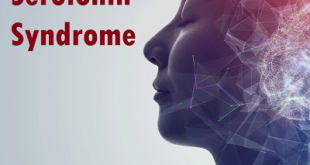Overview
Sheehan’s Syndrome, also known as postpartum hypopituitarism or postpartum pituitary insufficiency, can occur in women experiencing severe uterine hemorrhage or exceptionally low blood pressure during childbirth. The significant blood loss and subsequent reduced oxygen flow to the pituitary gland, caused by the hemorrhage, result in tissue death within the pituitary gland, leading to hypopituitarism after childbirth. If the pituitary gland is deprived of blood due to substantial bleeding during delivery, its capacity to function effectively may be compromised.
Primarily, Sheehan’s Syndrome affects the anterior (front) segment of the pituitary gland, resulting in deficiencies in crucial hormones like cortisol (ACTH), thyroxine (TSH), regulation of the menstrual cycle (LH/FSH), prolactin, and growth hormone. Hormone levels can be assessed through blood tests, while scans are employed to rule out other pituitary abnormalities, such as tumors. Factors that heighten the risk of obstetric hemorrhage, a potential trigger for the syndrome, include multiple pregnancies (twins or triplets) and placental abnormalities. Although occurrences are less frequent in developed nations due to enhanced prenatal and obstetric care, the syndrome may persist in developing countries. Importantly, Sheehan’s Syndrome is not hereditary.
Types of Sheehan’s Syndrome
Sheehan’s Syndrome is generally categorized based on the extent of pituitary gland damage and the severity of hormonal deficiencies. The main types include:
- Partial Sheehan’s Syndrome: In this type, only a portion of the pituitary gland is affected. Hormonal deficiencies are present but may not be as extensive as in the complete form.
- Complete Sheehan’s Syndrome: This type involves significant and widespread damage to the pituitary gland, resulting in a more severe deficiency of hormones. Multiple hormones, including those regulating stress response, metabolism, and reproductive functions, are typically affected.
The classification helps healthcare providers understand the extent of pituitary damage and tailor hormone replacement therapy accordingly. The severity of symptoms and the impact on various bodily functions can vary among individuals with Sheehan’s Syndrome.
Epidemiology
The prevalence of SS is variable. In a population-based study from Iceland, SS was diagnosed in 5.1 individuals per 100,000 population, whereas the prevalence of SS among 11,700 women >20 years of age was around 3% in northern India. In developed nations, up to 6% of hypopituitary subjects are diagnosed with SS while in countries like Turkey and Pakistan, up to one out of three cases of hypopituitarism is attributed to SS. The lower prevalence of SS in developed countries is a result of better obstetric care facilities in these countries and possibly disease unawareness and missed diagnosis.
Pathophysiology of Sheehan’s Syndrome
Pregnancy induces normal hyperplasia in the pituitary gland, driven by the proliferation of prolactin-secreting lactotrophs in preparation for breastfeeding. This results in a 120-136% increase in gland size to meet heightened nutritional and metabolic demands. While the enlarged gland compresses superior hypophysial arteries, supplying the anterior pituitary, its impact is minimal under optimal physiological conditions.
Following delivery, the pituitary gland undergoes a slight enlargement, with hyperplasia ceasing approximately three days postpartum. In uncomplicated pregnancies, the gland typically returns to its pre-pregnancy size within six months. However, in cases of postpartum hemorrhage, resulting hypotension and hypovolemic shock lead to decreased blood flow to the gland. Compression of the superior hypophysis during hemorrhage hinders adequate perfusion, causing pituitary gland ischemia and subsequent necrosis of the adenohypophysis. This ischemic damage, compounded by the hypercoagulable state of pregnancy, transforms the necrotic area into scar tissue, resulting in atrophy and physical dysfunction of the anterior pituitary lobe.
Regrettably, the pituitary gland lacks regenerative capacity, making the physical reversal of changes impossible. If 50% or less of the gland is atrophied, it is still deemed appropriately functioning. Sheehan’s Syndrome is considered in cases where 70-90% of the gland experiences necrosis and subsequent scarring, with the severity dependent on the number of hormones affected by tissue destruction. Post-infarct, ongoing tissue destruction is posited. Necrosed tissue releases antigens, fostering the development of anti-pituitary antibodies that proliferate and attack the remaining pituitary tissue. As the percentage of available tissue diminishes, hormone interruption increases, contributing to the progression of symptoms.
Symptoms of Sheehan’s Syndrome
The symptoms of Sheehan’s syndrome vary from person to person and depend on the extent to which the pituitary gland is failing to produce its hormones. Also, its symptoms usually manifest gradually and over a period of time. In rarer and much more serious cases, referred to as acute Sheehan’s syndrome, the symptoms appear right after childbirth:
- Fatigue
- Dry skin
- Weight gain
- Constipation
- Inability to resume menstruation (amenorrhea)
- Irregular menstruation (oligomenorrhea)
- Loss of pubic hair and hair in armpits
- Low blood pressure
- Inability to lactate (milk never comes in and the mother is unable to breastfeed)
- Thinning of the vaginal lining
- Diabetes insipidus (condition in which the kidneys produce an abnormally huge volume of urine)
- Loss of strength in muscles
- Insulin sensitivity
- Decreased libido (reduced interest in sex)
- Hot flashes
- Reduction in size of breasts
- Fast and/or irregular heartbeat (tachycardia)
Causes of Sheehan’s Syndrome
Sheehan’s Syndrome, also known as postpartum hypopituitarism, is typically caused by severe postpartum hemorrhage, leading to insufficient blood supply and oxygen to the pituitary gland. The main causes and contributing factors include:
- Postpartum Hemorrhage: The most common cause is significant blood loss during childbirth, often due to complications such as uterine atony (failure of the uterus to contract) or other issues related to childbirth.
- Low Blood Pressure (Hypotension): Extremely low blood pressure during or after childbirth can reduce the blood flow to the pituitary gland, leading to ischemia and tissue death.
- Uterine Atony: This condition involves the inability of the uterus to contract properly after childbirth, leading to prolonged bleeding and an increased risk of Sheehan’s Syndrome.
- Placental Abnormalities: Conditions such as abnormalities in the placenta, multiple pregnancies (twins or triplets), or other complications during pregnancy can increase the risk of obstetric hemorrhage and, consequently, Sheehan’s Syndrome.
While Sheehan’s Syndrome is less common in developed countries due to improved medical care, it can still occur, particularly in settings with limited access to advanced obstetric care. Early recognition and management of postpartum hemorrhage are crucial in preventing the development of Sheehan’s Syndrome.
Risk factors of Sheehan’s Syndrome
- Severe Postpartum Hemorrhage: The primary risk factor is significant bleeding during or after childbirth.
- Low Blood Pressure: Extremely low blood pressure during or after childbirth can contribute to the development of Sheehan’s Syndrome.
- Uterine Atony: Problems with the uterus contracting properly after childbirth increase the risk.
- Placental Abnormalities: Conditions affecting the placenta, such as abnormalities or complications during pregnancy.
- Multiple Pregnancies: Higher risk in cases of twins or triplets.
- Limited Access to Obstetric Care: Occurrence is more likely in settings with limited access to advanced medical care.
- Complications During Childbirth: Any complications during the childbirth process can potentially contribute to Sheehan’s Syndrome.
- Delay in Treatment: Not promptly addressing postpartum hemorrhage or associated complications increases the risk of glandular damage.
Complications
Sheehan’s Syndrome can lead to various complications due to the hormonal deficiencies resulting from the damage to the pituitary gland. Some of the potential complications include:
- Hormonal Deficiencies: The primary complication is the deficiency of hormones normally produced by the pituitary gland. This can include cortisol (impacting stress response), thyroxine (affecting metabolism), gonadotropins (disrupting menstrual cycles and fertility), prolactin (affecting breastfeeding), and growth hormone (impacting growth and metabolism).
- Adrenal Insufficiency: Cortisol deficiency can lead to adrenal insufficiency, causing symptoms such as fatigue, weight loss, low blood pressure, and electrolyte imbalances.
- Hypothyroidism: Insufficient thyroxine levels can result in hypothyroidism, leading to symptoms like fatigue, weight gain, cold intolerance, and impaired cognitive function.
- Menstrual Irregularities and Infertility: Gonadotropin deficiencies can disrupt the menstrual cycle, causing irregularities or amenorrhea (absence of menstruation), and may lead to infertility.
- Lactation Issues: Prolactin deficiency can affect breastfeeding, leading to challenges in milk production and potential difficulties in nursing infants.
- Growth and Metabolic Abnormalities: Growth hormone deficiency can impact overall growth in children and metabolism in adults, potentially causing weight gain, decreased muscle mass, and altered lipid profiles.
- Psychological Effects: Hormonal imbalances can contribute to mood changes, depression, and anxiety.
- Cardiovascular Risks: Untreated hormonal deficiencies may increase the risk of cardiovascular problems over time, such as heart disease and stroke.
It’s important to note that the severity and combination of complications can vary among individuals with Sheehan’s Syndrome.
Diagnosis of Sheehan’s Syndrome
Diagnosing Sheehan syndrome can be difficult for doctors, as symptoms can emerge gradually and look similar to other conditions. Initially, a doctor will ask a person about their medical history and any complications with past childbirths.
They may also ask if a person experienced trouble producing breast milk and did not restart menstruation after childbirth, two common signs of the condition. With this information, a doctor may then order the following to help diagnose Sheehan syndrome:
- Blood tests: These tests will show any unusual hormone levels that indicate the pituitary gland is not functioning properly.
- Anterior pituitary hormone test: Measures the levels of certain hormones in the body.
- MRI: This imaging test will show any damage or changes to the structure of the pituitary gland that can help confirm a diagnosis of Sheehan syndrome.
Treatment
Treatment for Sheehan syndrome is to take the hormones your body no longer produces. You’ll need to stay on most of these hormones for life:
- Corticosteroids. Prednisone or hydrocortisone replaces adrenal hormones.
- Levothyroxine (Levoxyl, Synthroid). This medication increases the levels of the hormones your thyroid gland makes.
- Estrogen plus progesterone (or estrogen alone, if your uterus has been removed). These female hormones help normalize your menstrual cycle. You can stop taking them once you reach the age of menopause.
- LH and FSH. These hormones stimulate ovulation and can help you get pregnant.
- Growth hormone. This hormone helps maintain bone density, improves your body’s ratio of muscle to fat, and lowers cholesterol levels.
A specialist called an endocrinologist will oversee your treatment. You’ll have regular blood tests to check your hormone levels.
Prevention of Sheehan’s Syndrome
Preventing Sheehan’s Syndrome involves proactive measures during pregnancy and childbirth:
- Early and Adequate Prenatal Care: Regular prenatal check-ups help identify and manage potential complications early on.
- Monitoring for Multiple Pregnancies: Close monitoring and management of pregnancies involving twins or triplets to minimize the risk of postpartum hemorrhage.
- Addressing Placental Issues: Early detection and management of placental abnormalities during pregnancy.
- Prompt Management of Postpartum Hemorrhage: Timely intervention to control bleeding during and after childbirth is crucial in preventing damage to the pituitary gland.
- Uterine Atony Management: Strategies to address uterine atony, such as appropriate administration of medications or procedures to encourage uterine contractions.
- Ensuring Adequate Blood Pressure: Monitoring and maintaining blood pressure within a healthy range during childbirth to prevent hypotension.
- Access to Skilled Obstetric Care: Ensuring that childbirth occurs in a healthcare facility with skilled obstetric care to promptly address any complications.
- Awareness and Education: Educating healthcare providers and pregnant individuals about the risk factors, symptoms, and early signs of postpartum hemorrhage.
- Timely Blood Transfusions: Administering blood transfusions promptly if significant blood loss occurs to prevent complications.
- Individualized Care Plans: Tailoring care plans based on individual medical history and risk factors.
Preventing Sheehan’s Syndrome requires a comprehensive approach that emphasizes early detection, prompt intervention, and access to skilled medical care during pregnancy and childbirth.
 Diseases Treatments Dictionary This is complete solution to read all diseases treatments Which covers Prevention, Causes, Symptoms, Medical Terms, Drugs, Prescription, Natural Remedies with cures and Treatments. Most of the common diseases were listed in names, split with categories.
Diseases Treatments Dictionary This is complete solution to read all diseases treatments Which covers Prevention, Causes, Symptoms, Medical Terms, Drugs, Prescription, Natural Remedies with cures and Treatments. Most of the common diseases were listed in names, split with categories.







